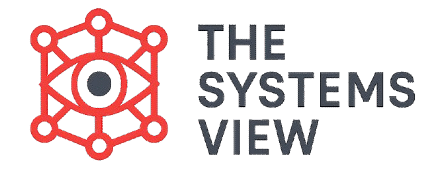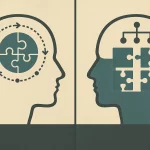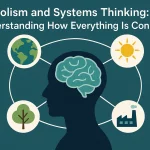If you take a clock completely apart, you have a pile of gears, springs, and hands. You still have all the parts, but you no longer have the ability to tell time. This simple example gets to the heart of holism.
Holism is the central philosophical belief of General Systems Theory (GST). It is the idea that the whole system possesses unique properties that are much greater than what you get when you just add up its individual components. To be a systems thinker is to adopt this holistic view. It forces you to look at the relationships and organization of the parts, rather than focusing on the parts in isolation.
Defining the System’s Unique Properties
Holism is fundamentally opposed to the older scientific method of reductionism, which insists on breaking things down. Holism argues that a system is defined by qualities that only appear when the parts are connected.
Concept of Emergence
The most important feature of a holistic system is the emergent property. This is a characteristic or behavior of the whole system that is not present in any of its individual parts.
- Example 1 (Biology): A single brain cell (a neuron) cannot be conscious. Consciousness only emerges when billions of neurons are connected in a highly organized way. Consciousness is an emergent property of the brain.
- Example 2 (Social): No single person in a sports team can win a championship. The ability to win only emerges from the combined coordination, strategy, and morale of the entire team.
Holism insists that since emergent properties are real, you must study the system as a whole to understand them.
Learn More : Understand the Concept of Emergence in Detail
Focus on Organization and Relationships
In a system, the relationships between the parts are often more important than the parts themselves. Holism makes you ask: How are these things connected?
- A system can be rebuilt with different parts, but if the organization (the pattern of relationships) stays the same, the system remains the same.
- For example, you can replace every actor in a theater play, but if the script (the set of relationships) remains, the play’s fundamental nature is preserved.
Holism as the Foundation of GST
Holism was championed by GST founder Ludwig von Bertalanffy as a necessary way to study living things.
Why Holism is Vital for Life
Bertalanffy and other early systems thinkers argued that life is the ultimate holistic phenomenon. Life features self-organization, growth, and adaptability. None of these properties can be explained by just studying a pile of chemicals.
- When you view an organism holistically, you must see it as an open system that constantly interacts with its environment. You can’t draw a boundary only around the organism; you must include the flow of air, food, and energy from its surroundings.
- This holistic view leads directly to the concept of Dynamic Equilibrium, where the whole system maintains its organized form through a constant flow and change of its parts.
Holism is the philosophical core of General Systems Theory. It requires the systems thinker to look at the entire pattern and the relationships of the system first, recognizing that a complex, organized whole always possesses characteristics that its individual components do not.
Conclusion
Holism is the powerful idea that shifts the focus of analysis from the pieces to the whole. It recognizes that organization and relationships are what create unique and important features, known as emergent properties. By embracing holism, General Systems Theory provided the intellectual basis for studying all complex phenomena—from the cell to the global economy—as organized, interconnected systems where the whole is indeed greater than the sum of its parts.



